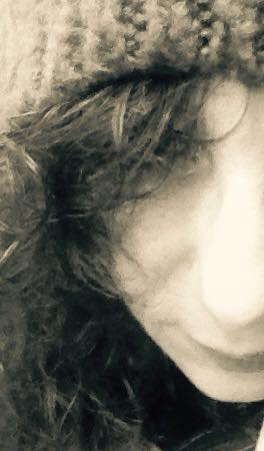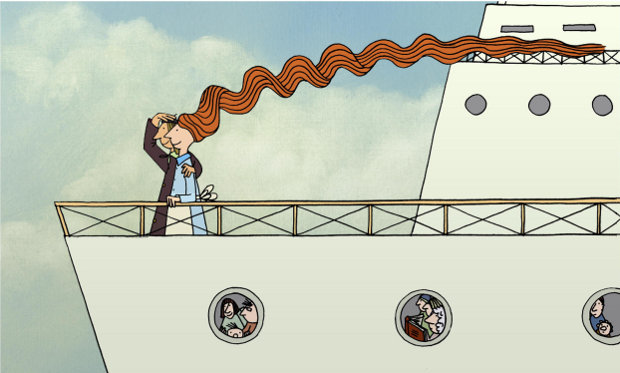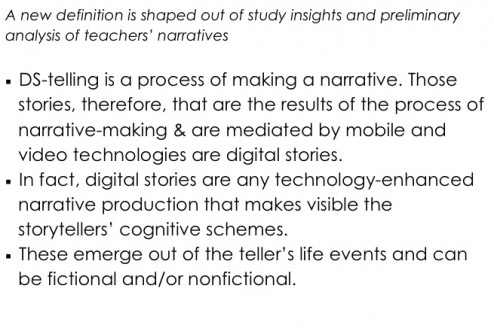
We keep re-inventing our online and offline selves.
Rather than targeting a coherent self,
the true self seems to be a more tangible goal.
Truthfulness to our life projects, responsibility and commitment will become
the coherence we seek.

not just another…

We keep re-inventing our online and offline selves.
Rather than targeting a coherent self,
the true self seems to be a more tangible goal.
Truthfulness to our life projects, responsibility and commitment will become
the coherence we seek.
 Ooopsss!!!! where is my other half?
Ooopsss!!!! where is my other half?
I did this shot as an experiment for selfie in the Athens metro heading to the Acropolis museum.
Later, I received a link to Gabriel Isak‘s artwork from Ophelia.
Entangled with stories in the past (by Gabriel Isak)
 Young Filmmakers in MoViE : Is there more in storytelling with digital technologies and mobile devices? Our work and research at Cicero Learningwith young people in schools shows that, yes, making digital stories is also making short films. This turns young storytellers into filmmakers as well.
Young Filmmakers in MoViE : Is there more in storytelling with digital technologies and mobile devices? Our work and research at Cicero Learningwith young people in schools shows that, yes, making digital stories is also making short films. This turns young storytellers into filmmakers as well.

The evolution of cinema and the birth of a new art form
Tom Perlmutter is Government Film Commissioner of the National Film Board of Canada.
Extract from an interview to D. Sarto about his role as NFB chairman and responsibilities:
Tom Perlmutter: First of all to be clear, it’s an unusual role which is not typically done these days. I’m both Chairman of the board of trustees as well as the equivalent of the CEO. The most critical and important role is providing the strategic vision of what direction we need to head in, where are we going to put our priorities and how are we going to get there. Then, how we take our strategic vision and make it operational. How do you actually make it work? How do you use your resources effectively and efficiently, because they are both limited? Because we are essentially government funded, through a parliamentary appropriation that is not indexed [for inflation], meaning we’re losing purchasing power [over time], we have to be effective in terms of how we use our dollars. But all of that has to be in service of something. It’s not simply that I’m there as an efficient manager. It’s to provide a vision for this odd thing [the NFB] which doesn’t exist anywhere else. It’s a production and distribution studio that happens to be publicly owned. And that drives the job.
Source: Animation World Network
What does digital storytelling mean for teaching and learning? Is it another disruptive ephemeral technological fad? Or does it signal a new everydayness in schools?
These are themes that our ongoing study on the digital storytelling experience tackles with. In the study we aim to unlock teachers’ meanings of the integration of the digital in the pedagogical meeting across countries. To do so, we look into the stories resulting from semi-structured interviews of teachers and analyze emergent themes within a phenomenological standpoint.
Preliminary findings were presented 17.05.2013 at the Teacher Education and Policies in Education International conference, hosted at the University of Helsinki.


digital culture, [social media, action,] teacher, narrative [7] 9
digital culture, [social media, action,] teacher, narrative, metaphor 3 [3]
Hy e-theses database : mysearch
Out of 9 search results i chose to review two master’s theses and one doctoral dissertation (Faculty of Arts, Social Sciences, and Behavioral Sciences respectively).
Ferica, Imy (2012). Understanding TED as Alternative Media, Master’s Thesis, Faculty of Social Sciences, HY https://helda.helsinki.fi/handle/10138/34133
This choice is driven by my interest in the different expressions of the digital and these definitely play a defining role in the shaping of digital culture. in this study Ferica investigates how alternative media build a sustainable civil society movement through incorporating dominant values in achieving alternative media goals. Calls this a hybrid approach and argues that it also affects the ways alternative media serve the community, promote democracy and prompt social changes.
Ferica judges that a critical realist approach will help unfold the ways the media work ‘in order to encourage informed action aimed at eradicating barriers to equity and justice’ (Deacon, 1999, p. 10); and describes the methodological steps taken as ethnographic actions. These are translated into offline interviews, offline participant observations, online observations, and textual analysis of online content.
The argument is that the ethnographic plan targets “the symbolic meaning embedded in products”. What is not made clear, however, is whether in the meaning of ‘products’ observations and interviews are covered. Or is online content the issue exclusively? More questions then come forward: whose symbolic meaning does Imy set out to explore? Why is the concept of ‘digital artifact’ left out?
I understand i am stretching out here while this is only a short essay on data analysis.
In order to deal with the vast amount of data Imy sets out to construct a map and re-arranges random concepts into new contexts; uses coding or indexing and explains:
‘Coding helped me to label, separate, compile, and organize data into interrelated causal concepts and categories. I created some general theoretical connections between the concepts and categories, as well as how they relate to the literature from the conceptual framework chapter. Henceforth, I produced the following qualitative data analysis framework’.
The framework is indeed a good technique to navigate the data creating a connection map and I can see Imy’s point that further interpretation is required to explain the interconnections and to justify the findings. But I cannot really find evidence of how the deeper analysis and the interpretation needed -and this is how Imy puts it- are performed.
Read the discussion of findings, liked the arguments and the connections with literature. Still, keep thinking: Do i miss a point here?
Tiainen, Katriina (2012). A Genre Analysis of Academic Research Blogs, Master’s Thesis, Faculty of Arts, HY https://helda.helsinki.fi/handle/10138/37012
here is another master’s thesis and, yes, the choice draws upon the ‘digital’ again:
the digital artifact as genre and possible ways to perform this type of analysis
Katriina’s argument is convincing, the reading is captivating, and here is how she ‘frames’ the reader:
‘There has been extensive research on different academic genres …, but, being a rather new phenomenon, academic research blogs have not been the focus of many genre analyses.’
And goes on to argue for the study’s conception as an entity to fill the gap existing in the literature concentrated on some particular feature of the genre, for example on the reasons why academics blog or the practice of hyperlinking.
Provides valuable insight into how blogging evolves into an academic genre:
‘This understanding of the importance of creating a presence of oneself on the Internet has paved the way for many academics to start writing a scientific blog of their own.
In these blogs, academics can disseminate and discuss their research interest in their own terms, exchange their ideas and opinions with peers or lay people, or take part in an online debate. Luzón (2009: 75) suggests that blogs are “gaining momentum as one of most versatile tools for online scholarly communication”. In this study, I aim at shedding some light into this novel phenomenon of blogs created and maintained by researchers.’
This is pretty close to my understanding of blogging and adds to my idea of digital artifact and how to process the data i have collected from Facebook.
‘First of all, the capabilities offered by computer network technology are reconfiguring the ways texts are produced and understood, giving an interesting setting for investigating the new genres of the World Wide Web. Second, being a very popular mode of online writing, blogs can be considered an interesting online genre to analyse, because they highlight the affordances of hyperlinking and increased possibilities of multimodality not present in printed texts.’
Another captivating moment of the study is the way carrying out a genre analysis of academic research blogs is justified. Katriina constructs a solid theoretical basis:
‘I will conduct the analysis of my data by following Bhatia’s (1993) approach to genre analysis. … So, in the present study, the initial placing of the genre-texts in a situational context is easier when one has basic knowledge of the academic communities and their writing conventions, as well as Internet language, computer-mediated communication and blogs as a genre…’
The 4-step argument she proposes is an interesting plan :
‘These are the analysis of discourse communities, communicative purpose and the formal features of structure and language. The data for the analysis of discourse communities, communicative purpose and structural features was obtained through content analysis of the blogs as a whole, including boilerplate texts and comment sections. The linguistic features were analysed through a statistical corpus study of the text bodies of each blog entry.’
Really hooked up by Katriina’s thesis. Her process of analysis echoes part of my readings of Ricoeur’s and Habermas’s work.
‘In order to situate the genre of academic research blogs in a discourse community, I analysed the demographic characteristics of the blog authors. … Next, the overall communicative purposes of the blogs were coded. … The structural analysis of the blogs was carried out by selecting appropriate structural features’
The choice for constant analysis is grounded in theory and the interplay between gathering, analysing and theorising acknowledged as a fundamental element.
Nevertheless, a framework for analysis is not provided.